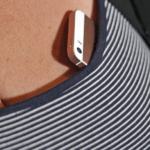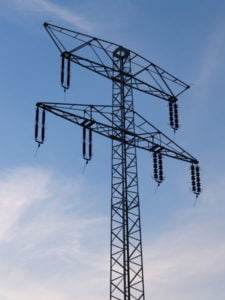Is there a link between Mobile Phones and Cancer?
Cell phones and electrical devices emit heat and radiofrequency energy (radio waves), from their antennas and batteries. The tissues that can absorb this energy, when pressed to ear, include skin, the ear, parotid salivary gland, lining of the brain and brain itself. Other tissues can be affected if the device is stored next to skin such as in the bra or trouser pocket. Ninety three percent of the UK population now have a mobile phone, a figure that has increased three fold since since 2003. Over this time, the number of cell phone calls per day, the length of each call, and the amount of time people use cell phones have also intensified. If the energy they produce influences the risk of cancer, even by a small amount, it would affect a vast sum of people and hence the reason why several public health organization have conducted numerous studies to see if the incidence of disease has increased in the tissues nearest to the antenna.
Reassuringly the radiofrequency energy produced by cellphones is non-ionizing radiation, which means it does not directly cause DNA damage. In animal studies, conducted by the National Institute of Environmental Health Sciences (NIEHS), cellphones have not been found to cause cancer or to enhance the cancer-causing chemicals. The only consistently recognized biological effect of radiofrequency energy is heating. The ability of microwave ovens to heat food is one example of this effect of radiofrequency energy. Radiofrequency exposure from cell phones does cause heating but it is not sufficient to measurably increase body temperature or “cook” the head. It has also been suggested that radiofrequency energy might affect glucose metabolism but the weak evidence is conflicting. One study showed increased glucose metabolism in the region of antenna compared with tissues on the opposite side of the brain. The other study reported the opposite, glucose metabolism reduced on the side of the brain where the phone was used. This is unlikely to significant risk mechanism. Another study investigated whether cell phones affects the flow of blood in the brain and found no evidence of such an effect.
Is there any evidence for a risk in humans?
In terms of an increased risk in humans, the massive Surveillance, Epidemiology, and End Results (SEER) programme found no increase in the incidence of brain or other central nervous system cancers between 1992 and 2006, despite the dramatic increase in cell phone use in this country during that time. One French case-control study (CERENAT) found no association for either gliomas or meningiomas when comparing regular cell phone users with non-users. However, the heaviest users did have significantly increased risks of both gliomas and meningiomas. This was finding was not substantiated in 3 other large epidemiologic studies (Interphone, Danish, Million Women Studies), which between them analyzed thousands of cellphone users over many years.
Other studies specifically assessed risks in children who have theoretically higher risks for three reasons. Their nervous systems are still developing and, therefore, more vulnerable to factors that may cause cancer. Their heads are smaller than those of adults and consequently have a greater proportional exposure to the field of radiofrequency radiation that is emitted by cell phones. And, children have the potential of accumulating more years of cell phone exposure than adults do. Thus far, the data from studies in children with cancer do not support this theory – A large case-control study called CEFALO, conducted in Denmark, Sweden, Norway, and Switzerland looked at children who were diagnosed with brain tumors between 2004 and 2008. Researchers did not find any association between cell phone use and brain tumor risk either by time since initiation of use, amount of use, or by the location of the tumor.

Use of Mobile Phone
There have been some published case reports and subsequent media coverage of issues related to how phones are carries on the body. A 51-year old woman from Bracknell in the UK had the habit of storing her cellphone in her bra. After 15 years she developed breast cancer on the same side. Another 50 year old woman Pontypool, Wales, was found to have breast cancer in the precise place where she normally stored her mobile phone. In Stuttgart, Germany, a 21-year-old women, with no family history of breast cancer or BRCA mutations developed breast cancer on the same side she regularly stored her phone since an early teenager. These anecdotal reports are by no means proof but do a raise some concerns as this intense local exposure over such long periods of time who be had to replicate in animal studies.
What do organisations conclude about mobile phones and cancer?
Mobile phones are more likely to cause harm by distracting drivers or even waling int o ther pedestrains of lamp posts. In 2011, the International Agency for Research on (IARC), classified cell phone use as “possibly carcinogenic to humans,” based on limited evidence from human studies, limited evidence from in rodents, and inconsistent evidence from mechanistic studies. The America Cancer Society (ACS) commented that there could be some cancer risk associated with radio frequency energy, but the evidence is not strong enough to be considered causal and needs to be investigated further but in the mean time individuals could limit their radio frequency energy exposure with the guidelines listed below. The National Institute of Environmental Health Science (NIEHS) states that the weight of the current scientific evidence has not conclusively linked cell phone use with any adverse health problems, but more research is needed. The USA Food and Drug Administration (FDA) notes that isolated studies reporting biological changes associated with radio frequency energy have failed to be replicated in human epidemiologic studies. In 2015 the European Commission Scientific Committee concluded that the available data do not show an increased risk of brain tumors or other cancers of the head and neck region for either adults or children.
Ways to reduce exposure to radio frequency energy from cellphones?
Mobile phones are more likely to cause harm by distracting drivers or even waling into other pedestrians or lamppost. The likelihood of them causing cancer is small but until further definitive trials are conducted these common sense measure seem sensible:
- Reserve the use of cell phones for shorter conversations
- Use a landline phone for longer call and when available.
- Switch sides of the head from time to time
- In young men do not regularly store your phone in your front pocket – next to your testes
- In young do not store your phone in your breast pocket or bra
- Use a device with hands-free technology, such as wired headsets, which
- Otherwise place more distance between the phone and the head of the user.







Leave A Comment